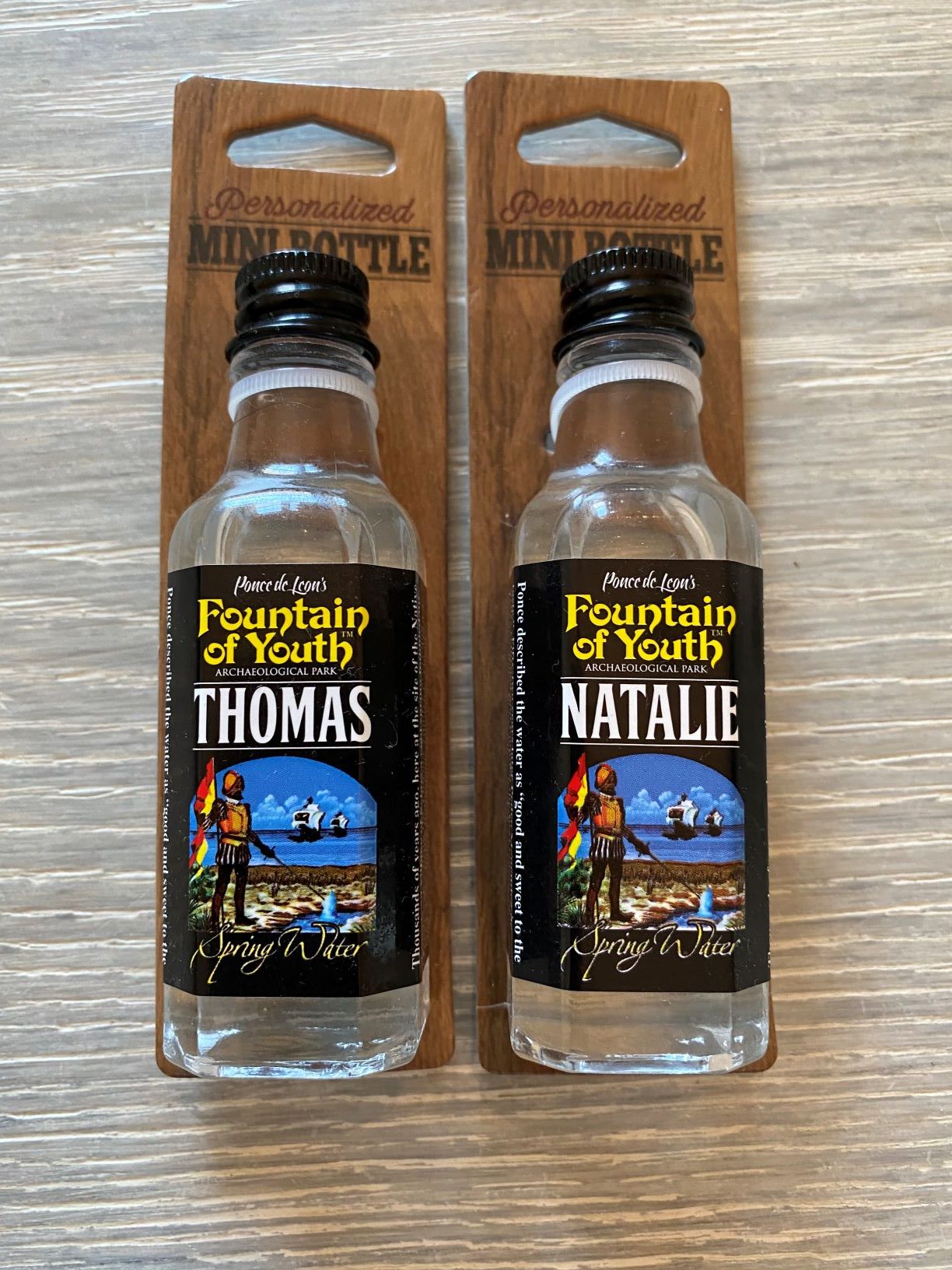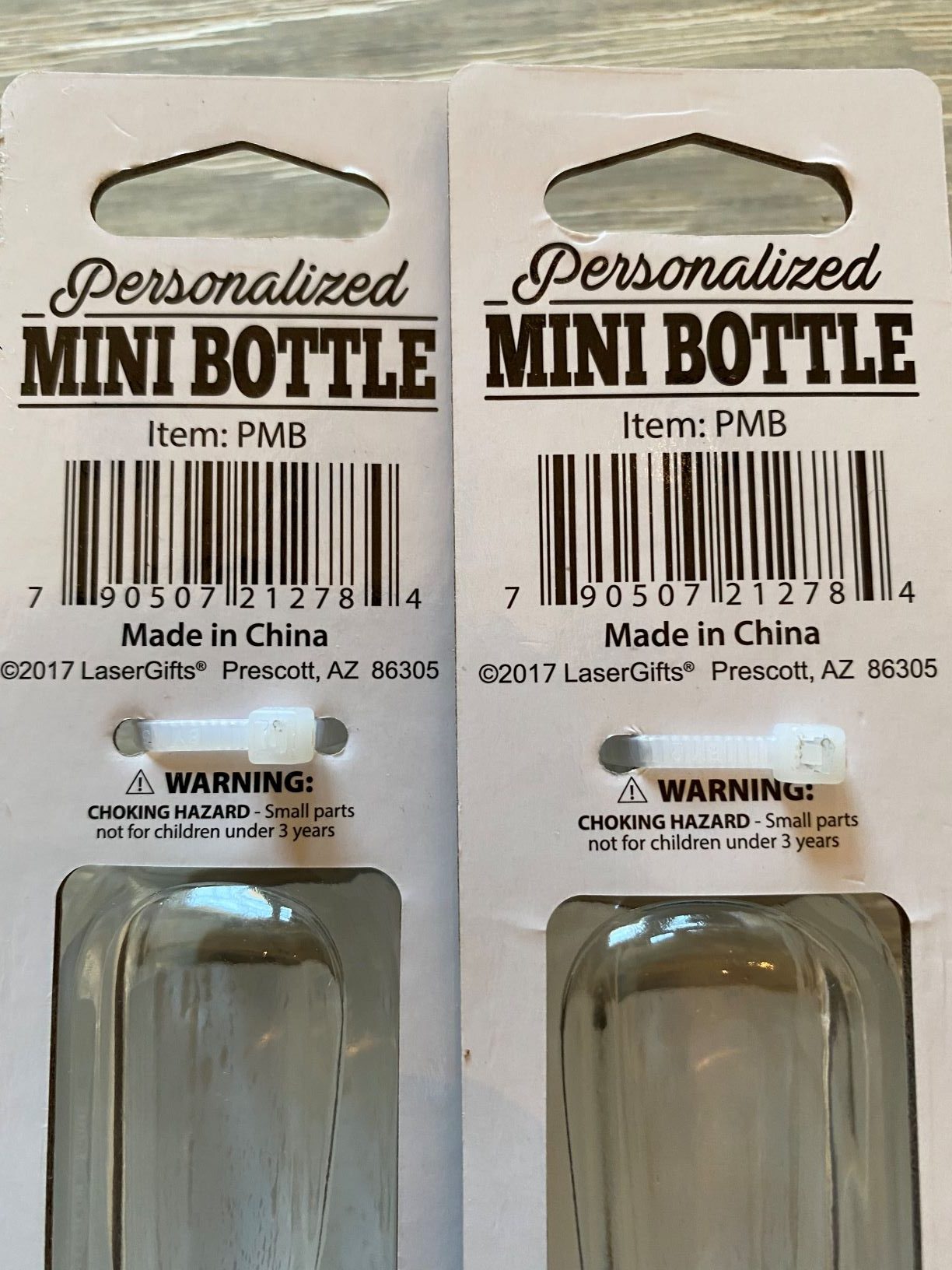

My buddy, Tom, recently visited to St. Augustine, Florida and he was kind enough to bring us souvenirs. No, my fiancé and I didn’t get t-shirts. We got something a heck of a lot better than that!
We were gifted tiny tourist miracles from Ponce de Leon’s THE FOUNTAIN OF YOUTH! In personalized bottles! That’s life changing, right?
Well, I thought it was awesome until I flipped over the bottle and discovered it was “Made in China.” WAIT, WHAT?
Then, we were sad. Our hopes and expectations of eternal youth – dashed. This was a kitschy, little reminder things don’t always turn out as you want them to or as advertised. Sometimes things turn out worse than you thought and sometimes, though not as often, they turn out better.
And so, when you get a regulatory letter saying the dealership has made customer or advertising mistakes requiring immediate correction, often your expectations start with dread and large dollar signs. That eventuality could happen. However, with proper care and diligence, you can settle the issue(s) quickly. Most often, these regulatory issues start one of three ways:
- A customer problem
- An employee issue
- Advertising violation(s)
Be vigilant on these three (3) issues. They should be front and center in keeping you out of trouble. There are plenty of risk mitigation strategies to prevent problems and that will be covered in a subsequent article. Risk mitigation is an on-going, every day practice which requires continuous improvement activity.
So, when you receive a letter, administrative action, lawsuit, subpoena, or a formal request for documents, from a regulator, read the paperwork with great care. Sometimes the magic is in the wording of the allegations. Read it and set it aside for the moment.
Next, research the problem. Interview the parties involved. Take clear notes as the nuance of the story matters.
If the alleged violation is customer or advertising based, pull the file and review it carefully. Do all of the signatures in the file look consistent? Or may someone have forged a signature?
Build the story of what actually happened by reconstructing the detail, step by step, and commit this to writing for yourself, so you have a chronological record of what happened. Be sure to include direct quotes from the witnesses in your chronology.
Now, refer back to the original allegations to determine what holes are left in the story. Try to unearth the details relating to those holes. Re-interview, as needed. Taking good notes is key!
Contact your risk mitigation expert and determine if the charge could be covered by your insurance policy. Consider this carefully. Depending on the dollars involved and the nature of the complaint, insurance company adjustors can make the matter more complex and time consuming. This is an expansive question, so this will be a future article, as well.
Most “complaints” have deadlines. Just be aware of this and ensure you are responding promptly.
At this point, I advocate contacting the regulator directly and having a friendly chat. Find out what he/she is looking for. If the problem was related to a consumer or employee, resolving it may be as simple as satisfying their concerns. If it is advertising-related, I can assure you it won’t be that simple.
During that call, be positive, be professional, and assure him/her that you want to resolve the issue. Ask for permission to ask questions. Grab your chronology and ask questions to try to fill in the gaps where the allegations do not make any sense. Go slowly and listen carefully as the regulator may or may not have the correct information.
If the regulator has bad information where you can prove the allegation is incorrect, gently offer up one or two incongruous tidbits at that time. Depending on the rapport you have built, you can offer a third, though I would not offer more than that on a first call. The purpose here is to sow doubt about the veracity of the complaint. Don’t overdo it.
The most critical question you should ask is if you can reach out to the upset person(s) and try to satisfy their concerns directly. Most of the time, the answer to this question is a resounding “yes.” It’s important to ask the question. It shows respect and deference.
Then, agree on a time frame when you will get back with the regulator. Keep the him/her posted on your progress. It’s better to over-communicate than under-communicate.
By now, I am sure you are asking yourself, “when he going to talk about getting the lawyer involved?” The attorney may not be necessary. This is a fact specific question and I cannot generalize to give guidance on this.
Then, satisfy the aggrieved parties’ concerns. However much it costs to fix the problem, I promise it will be less than letting the regulator devise a solution.
Ask them to sign a Release of Claims, which should include language like this:
“Customer acknowledges that he is COMPLETELY SATISFIED with ____________ (dealership) and with the resolution of his concerns.”
Then, call your regulatory contact again and walk him/her through the dynamics of what happened with the upset person(s). Explain how you resolved the concerns. If a lack of proper business practices caused the problem, it’s usually okay to acknowledge it. Thank the regulator, and, if appropriate, let him know you are going to change your practices so this doesn’t happen again. (Use a lot of discretion here as this may not be necessary and you do not want to create a problem where there isn’t one.)
Provide the written document to your contact so he can close his file.
Phew! Great work!
Hopefully, your expectations of dread, gloom, and doom did not come to pass. What did you learn? Is it time to change your risk mitigation strategies? If this was stressful for you, consider taking the time to install new policies and procedures to prevent these problems before they occur. You can reduce your anticipated stress level for future problems by hiring someone who can help with these difficult situations.
Temper your expectations through continuous improvement activity. Risk mitigation is not a one-time thing but is an ongoing practice. It reduces the chances of regulatory interference and catastrophic losses.
Consider changing your business processes to accommodate these loss prevention techniques. Then, I’ll meet you in St. Augustine where we can sip Chinese water from the Fountain of Youth.

Leave A Comment